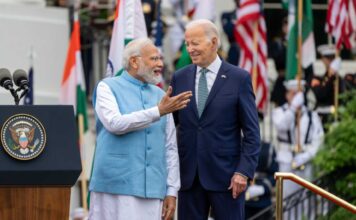By Bal Ram Singh, PhD
The brahmacharya is a reality not just as a concept but a reality as derived from scientific studies.
According to neurological studies, the neural plate, the source of all neurological tissues in humans, begins to form at day 16 after conception. Nerve cells start developing for sensory perception after 12 weeks of pregnancy, and can be used to communicate with mother and other external sensory stimulations, including sound and nutrition, suggesting an enormous role for family and environment in the development of a child.
At birth, all the 100 billion neurons are in place, ready to learn, archive, and create. By age 3, nerve cells make connections with other neuronal cells, and establish a base structure for further development. Between age 3 and 5, neuronal cells develop their own biological complexity and biology, requiring energy and care. By age 9, all the structures of the brain are in place, ready to be programmed by the next phase of neuroplasticity, the hallmark of the teenage years.
According to Neuroscience News a recent study by Perica et al., “the findings illuminate critical period plasticity in the frontal cortex of the brain and underscore that, during adolescence, dynamic sculpting of the brain region that supports cognition and cognitive control has important implications for how we understand biological mechanisms of heightened sensation seeking and other adaptive behaviors that support adult brain trajectories.”
In other words, brain – the tool of human life gets encrypted during the brahmacharya of life to guide human adventures, and thus becomes the foundation. It is the conductor and manager of the human body and its interaction with the universe. Here is how this then manifests itself into the Brahm!
In a paper published in a journal named Proceedings of National Academy of Science, it has been suggested that religion plays a substantial role at least in the Abrahamic traditions. According Epley et. al. “Religion appears to serve as a moral compass for the vast majority of people around the world. It informs whether same-sex marriage is love or sin, whether war is an act of security or of terror, and whether abortion rights represent personal liberty or permission to murder. Many religions are centered on a god (or gods, up to the Brahm) that has beliefs and intentions, with adherents encouraged to follow “God’s will” on everything from martyrdom to career planning to voting. Within these religious systems, how do people know what their god wills?”
The results suggested that the subjects thought their views on the moral issues are at variance with a typical American, and also God’s views are in fact more at variance from a typical American. However, when the question was asked whether their views are different from those of God’s, there was no difference. This led to the conclusion that most people are egocentric in their views about their beliefs or Gods. In Christian, Jewish and Muslim religions God is separate who creates and controls the world. At the same time the Jewish and Christian traditions state explicitly that God created man in his own image, but believers and nonbelievers alike have long argued that people seem to create God in their own image as well. Xenophanes (6th century B.C.), for instance, coined the term anthropomorphism when noting the similarity between religious believers and representations of their gods, with Greek gods being fair skinned and African gods being dark skinned. Voltaire reports a Pope as saying, “If God made us in His own image, we have certainly returned the favor”.
The neuro-imaging analysis shows that people form the image of their own god, and judge others accordingly. If one translates the same result in dharmic traditions where god is the projection of oneself then the results can explain the long held spiritual view from the Veda – yatha piṇḍe tathā brahmāṇḍe, meaning what is inside oneself is what is the entire universe. However, it is not just an assertion of the egocentric kind. Ego is in fact one of the shatharipus (षठरिपु)– kāma, krodha, lobha, moha, mada, matsara, and is supposed to be overcome.
From that perspective, actually yatha piṇḍe tathā brahmāṇḍe is an assertion that needs to be understood by self-realization (atmabodha).
That leads to the Vedic concept of ‘aham brahmāshmi’, a creation of self by the self that includes all in itself by the brahmacharya brain.

Balram Singh is a Professor and the President of the Institute of Advanced Sciences, Dartmouth, Massachusetts, researching Ayurveda, Yoga, Vedic education, and Vedic social and political traditions. He is also adjunct faculty at Jawaharlal Nehru University (JNU), New Delhi.













